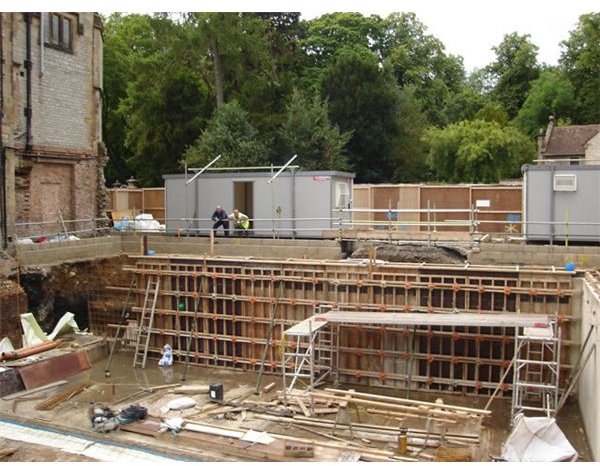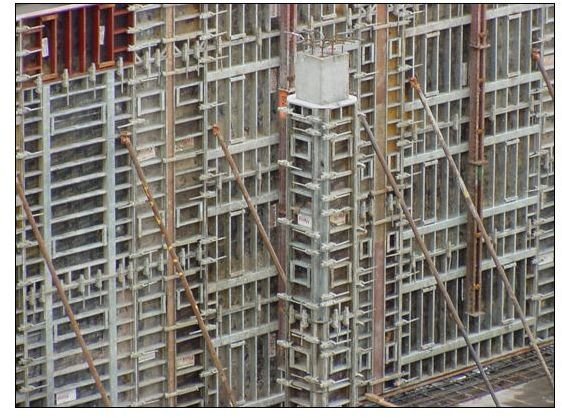Concrete Formwork Details for Poured Concrete Construction
Concrete Formwork Basics
Concrete needs to be poured into an enclosed space and remain there until it adequately consolidates to maintain its shape. Concrete that has been poured newly for concrete slabs can be preserved in shape by existing features like walls and edgings. Alternatively, provisional shuttering, which is also called formwork, could be necessary. On vertical structures, formwork construction can be difficult and is therefore usually carried out by professional formwork erectors. However, slab work at ground level is usually less difficult and needs only simple formwork. In all the cases, whether vertical structures or work at the ground, the formwork should be strong. It must be able to bear the forces produced by the wet concrete, including the weight of the vibration producing equipment. The formwork joints must be fastened adequately and prevent the leaking of the wet concrete during the vibration and curing. The primary formwork types being used for producing ground slabs are steel roadform and customized timber shuttering.
Roadform
Roadform, a permanent type of formwork used for poured concrete for housing and other structures is usually preferred for use since it is strong, capable of bearing different loads, and is a permanent arrangement. It can be
used for construction work at different sites, involves a moderate skill to configure the necessary arrangement, and is inexpensive. It consists of steel sections that are channel-shaped, binding brackets, and an arrangement for the linking of adjacent sections. The units are stacked to create space for the required concrete depth. However, the maximum height is determined by the height of the steel pins that hold the system in its position. The steel pins are located with the bracket and forced into the ground. Each section is aligned accurately and held by tightening the fastening wedge. It is ensured that the roadform is firmly held in its place. Roadform is erected by aligning the sections with a rigid cord and by ensuring that the sections are accurate vertically. The pins should be firm with no gaps between the sections.
Timber Shuttering

Roadform is only suitable for simple slabs. Timber shuttering, however, may be necessary for complicated work. The enormous benefit of the timber shuttering is that since it is created at the site, it can be customized to any desired configuration. Timber shuttering is the normal option for vertical concrete works. It is also used in combination with the steel elements. The shutter part in contact with concrete is called “form lining,” while the supporting timbers are identified as “bracing.” The bracings are created from timber that is straight, robust, and capable of bearing the desired loads. The form lining is generally some type of plywood or hardboard. Formwork is a professional trade, especially for the vertical structures. Bracing that is exceptionally intricate is designed by structural engineers.
